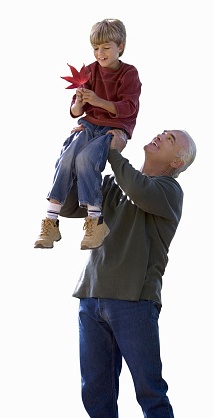 In earlier installments, I’ve talked about health concerns for active people over 40, as well as the importance of strength and functional training for people in this age group. As promised, I will now focus in on strength training, and we’ll start with your butt.
In earlier installments, I’ve talked about health concerns for active people over 40, as well as the importance of strength and functional training for people in this age group. As promised, I will now focus in on strength training, and we’ll start with your butt.
The glute complex (your hips) has the greatest potential for strength and power in the human body, and is the foundation for all ground-based movement. If used properly, it lifts things up (like the grandkids) and spares the low back. Let’s call this the “lifting things up” or the dead-lift pattern.
The Lost Glutes
Because of the enormous amount of sitting done in our modern lifestyle, many adults can’t find their glutes (through muscle activation) with a map, hand mirror, and a flashlight. When you place people on their backs on the floor with their knees up and feet planted on the ground, then have them try to raise their hips off the floor by contracting just their glutes, many will fire their hamstrings while their glutes remain totally quiet. This situation has been referred to as glute amnesia; more accurate would be to say it’s a disconnect between brain and muscle. The body will find a way to accomplish the desired task by resorting to Plan B (in this case, the hamstrings) if the primary movers, the glutes, are offline. The hips will move off the ground but at a cost: inefficient movement, lower performance potential, and higher risk of injury to the Plan B muscles—and also to surrounding tissue and joints.
Foundational Movement: The Hip Hinge
Learning to properly hinge the hips and to activate the glutes is critical for skilled and graceful movement and injury prevention as you age. This is life quality for now and into your future. So let’s try the foundational movement, the hip hinge:
- Stand with your feet about hip width apart and hands resting on the front of your thighs. You can also hold a light barbell or a pair of light dumbbells to provide a little resistance.
- With your lower legs perpendicular to the ground, push your hips backward while bending forward at the hips. Your upper body will fold over with your back in a straight line from the tailbone to the back of your head.
- Do not squat and do not bend forward at the waist (lumbar spine).
- Once your hands reach your knees, pause, focus on your glutes, and tighten them as you try to push the ground away with your feet. Return to standing with a straight line from the heels to the back of your head.
- Rinse and repeat until the movement feels natural.
- If in doubt, keep your hips higher while you bend forward and sense your upper body closing the distance with the ground.
- If you have health issues, balance problems, or serious muscle weakness, seek proper medical assistance. Watch this video as a guide.
Your body is programmed to avoid falling on your face by trying to stay more upright and bending your knees more into a squat pattern if it doesn’t sense proper muscle activation. If you learn to position your skeleton into the correct architecture for the movement you are attempting and recruit the target muscles for that movement (in this case, the glutes and core), you will not face-dive. If you do splat, see #6 above (and please post the video on YouTube).
Every day, at some point, you will need to bend over (hinge) and pick something up. Conventional wisdom dictates that we lift with our legs from a squat position, but our greatest power for this movement comes from the hinge pattern and the glutes. That’s why we call it the Big House. Heed the immortal words from Sir Mix-A-Lot: “You can do side bends or sit-ups, but please don’t lose that butt.”
This blog was written by Rick Huse, CSCS, WKC Competition Coach. To find out more about the NIFS bloggers, click here.

